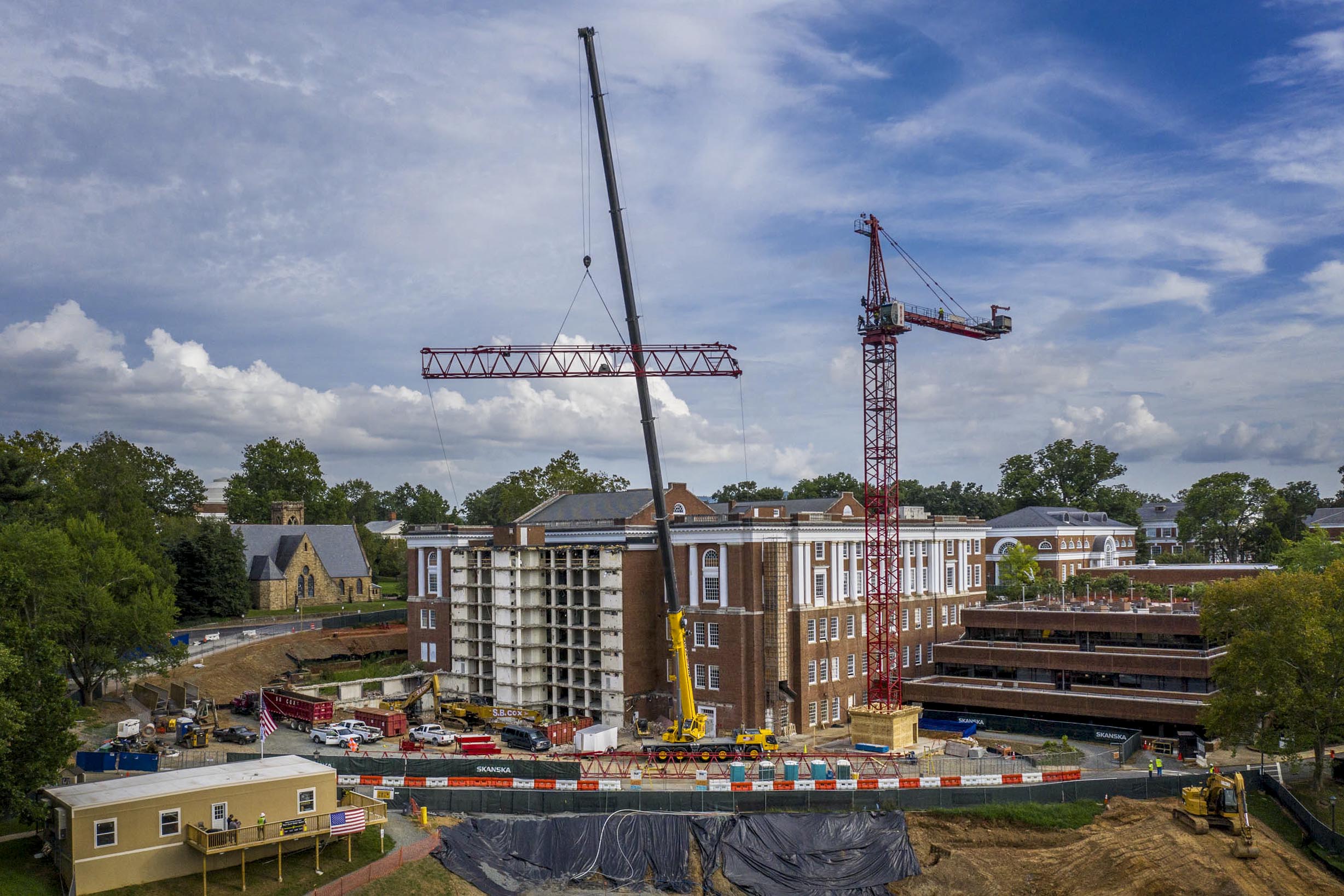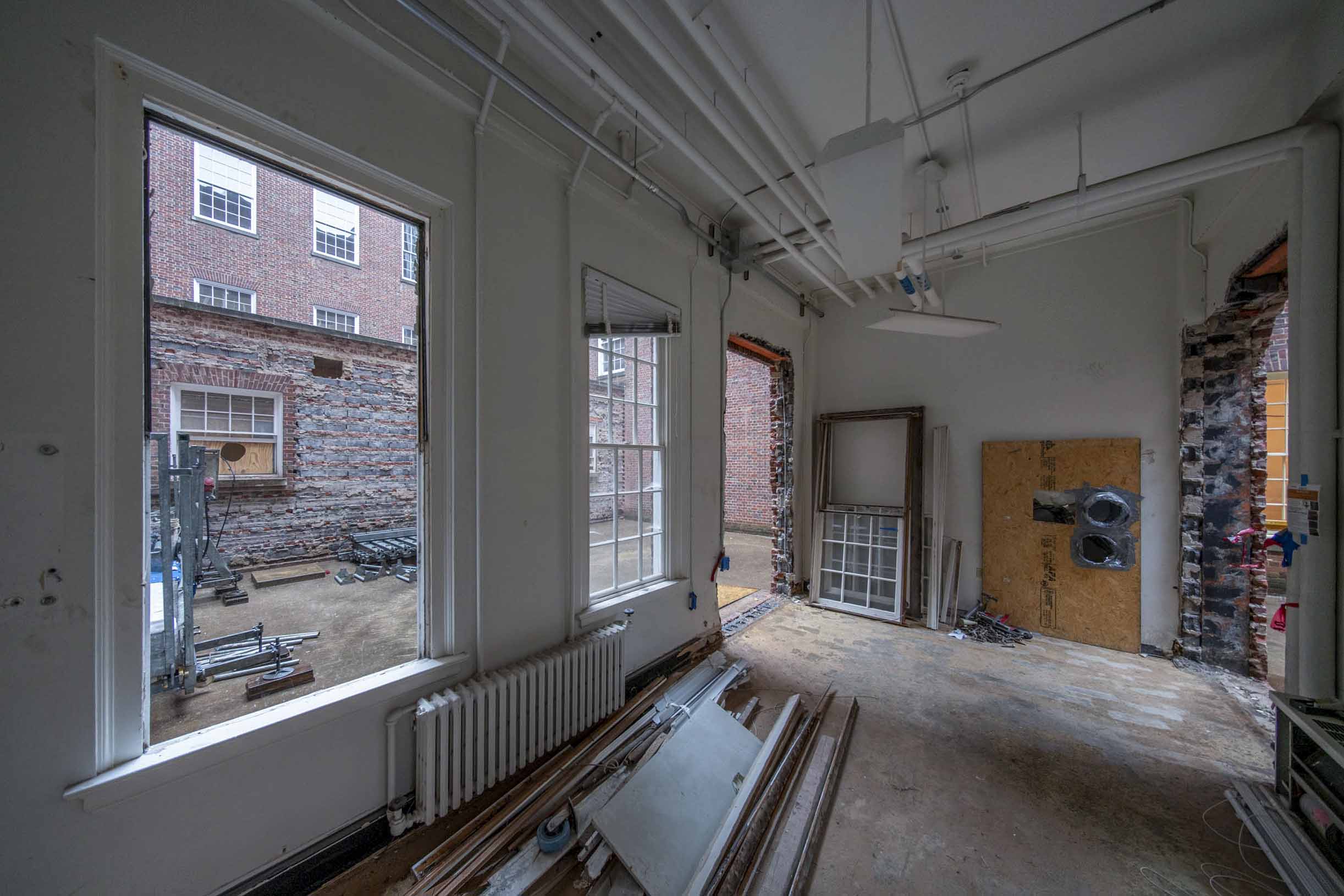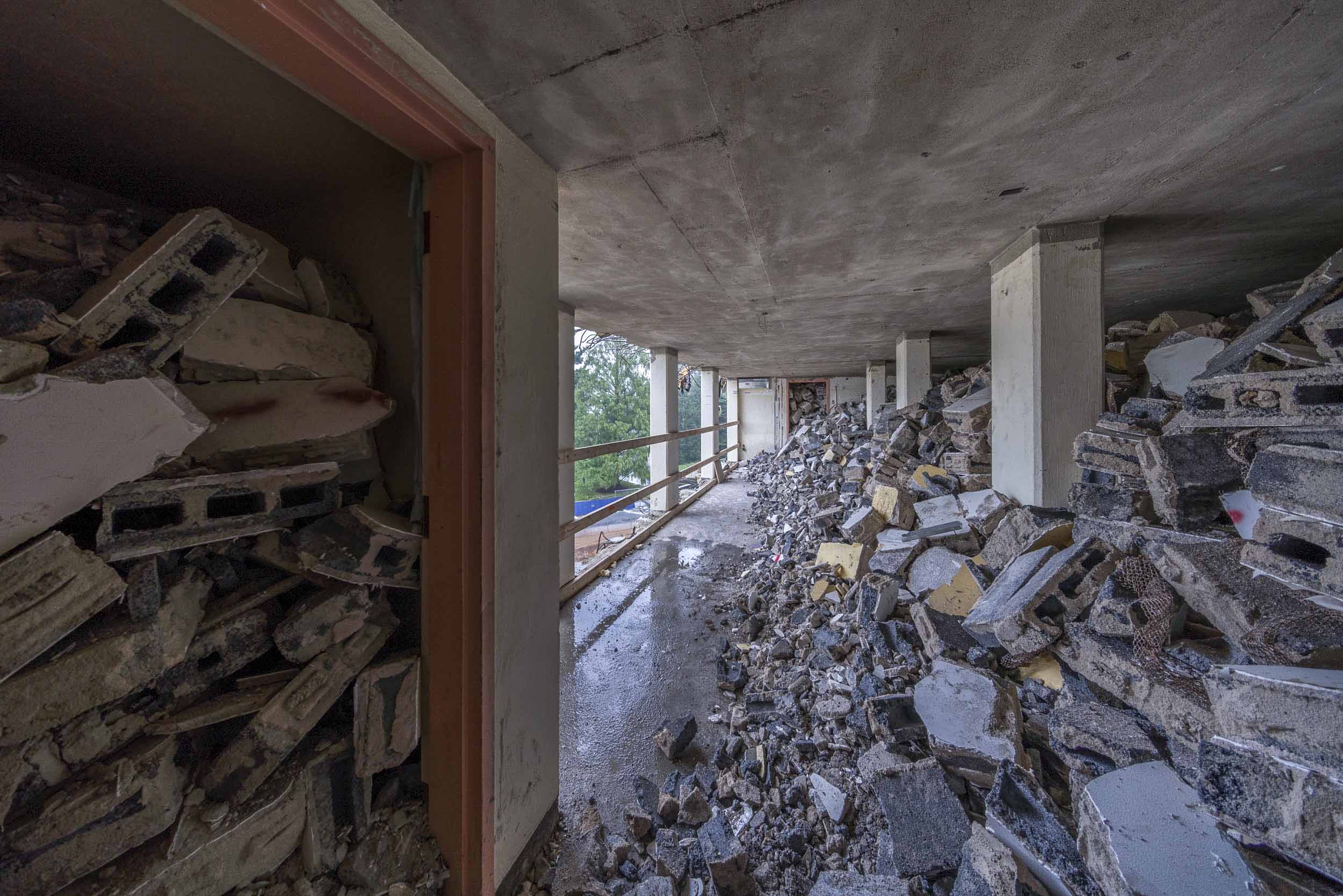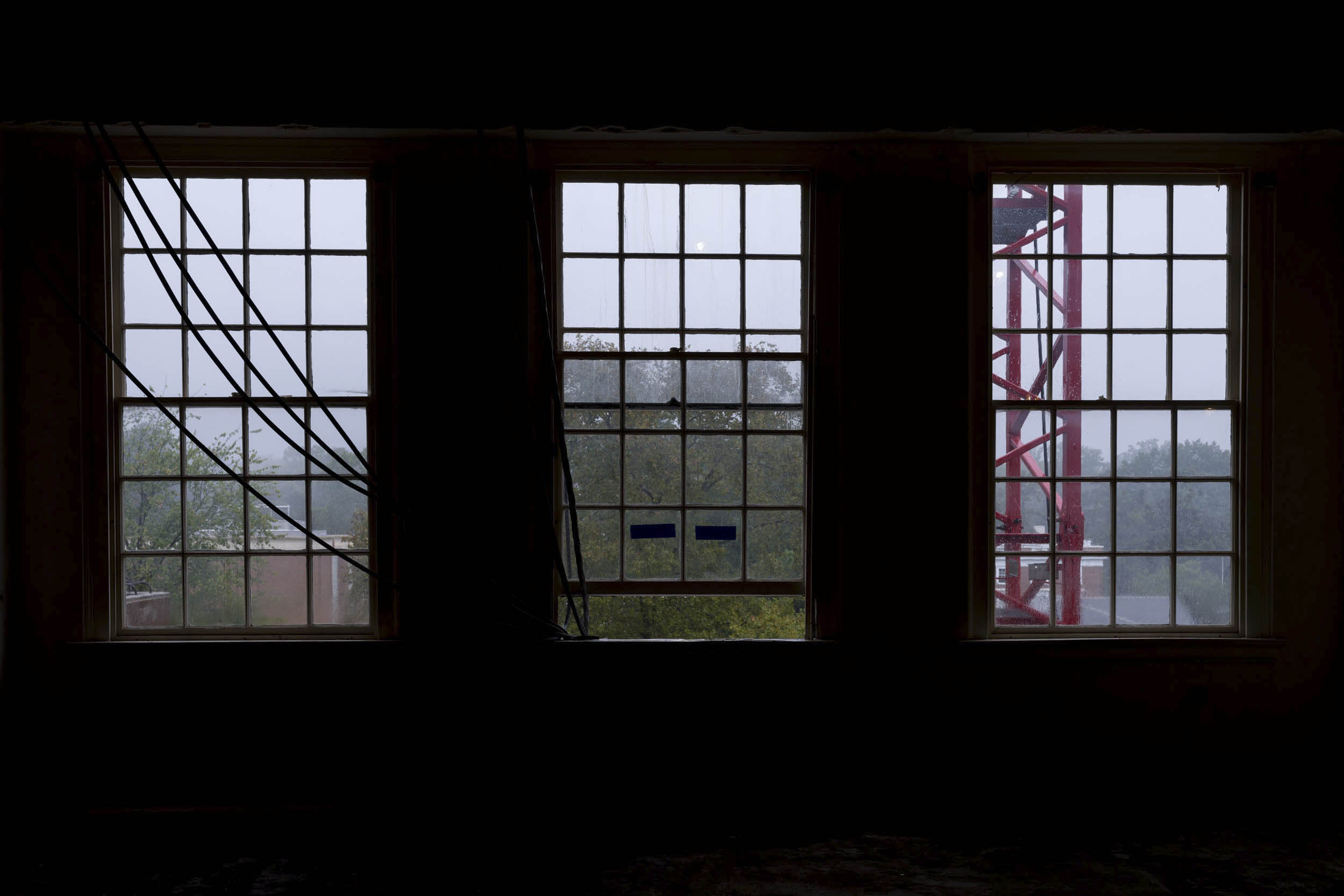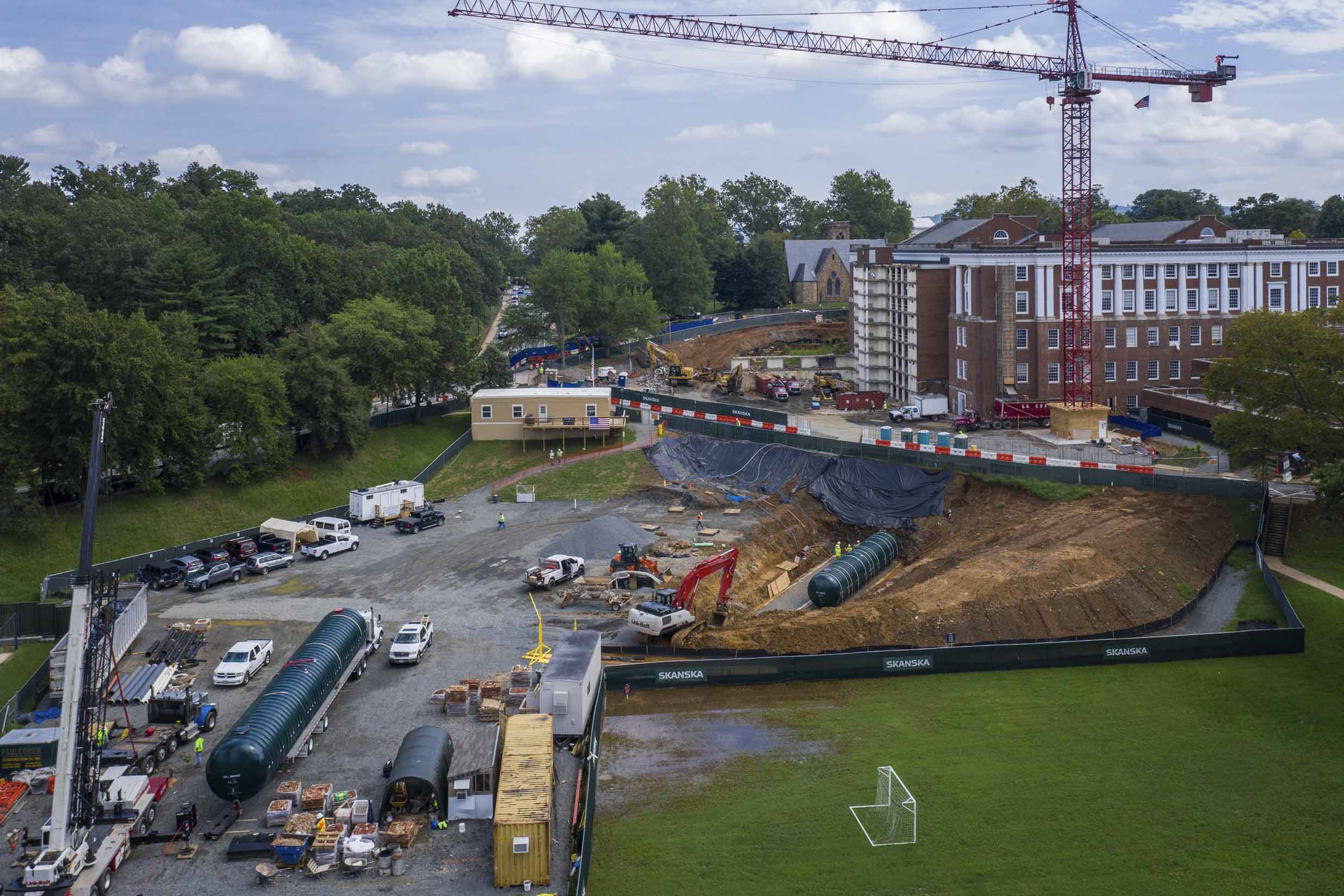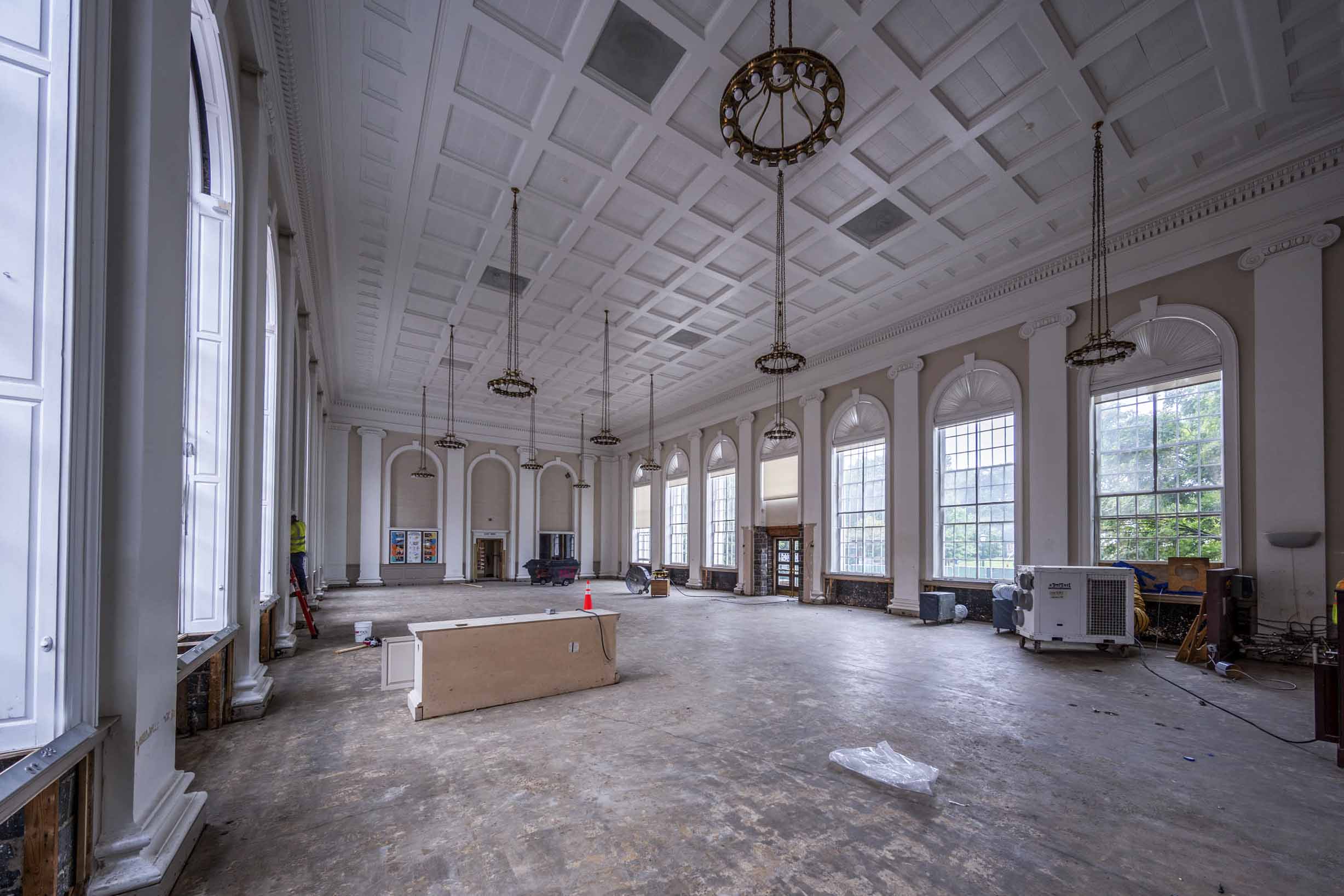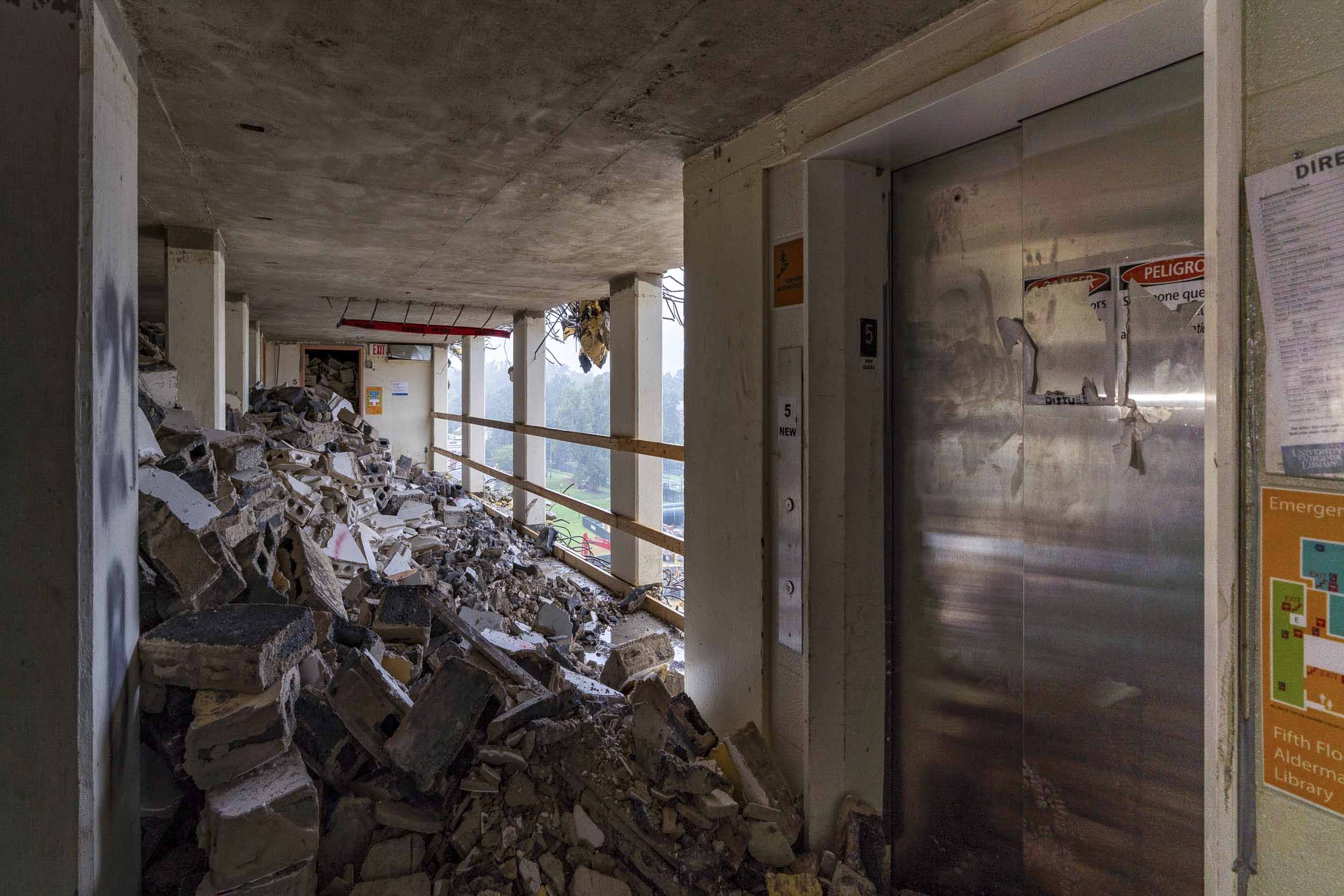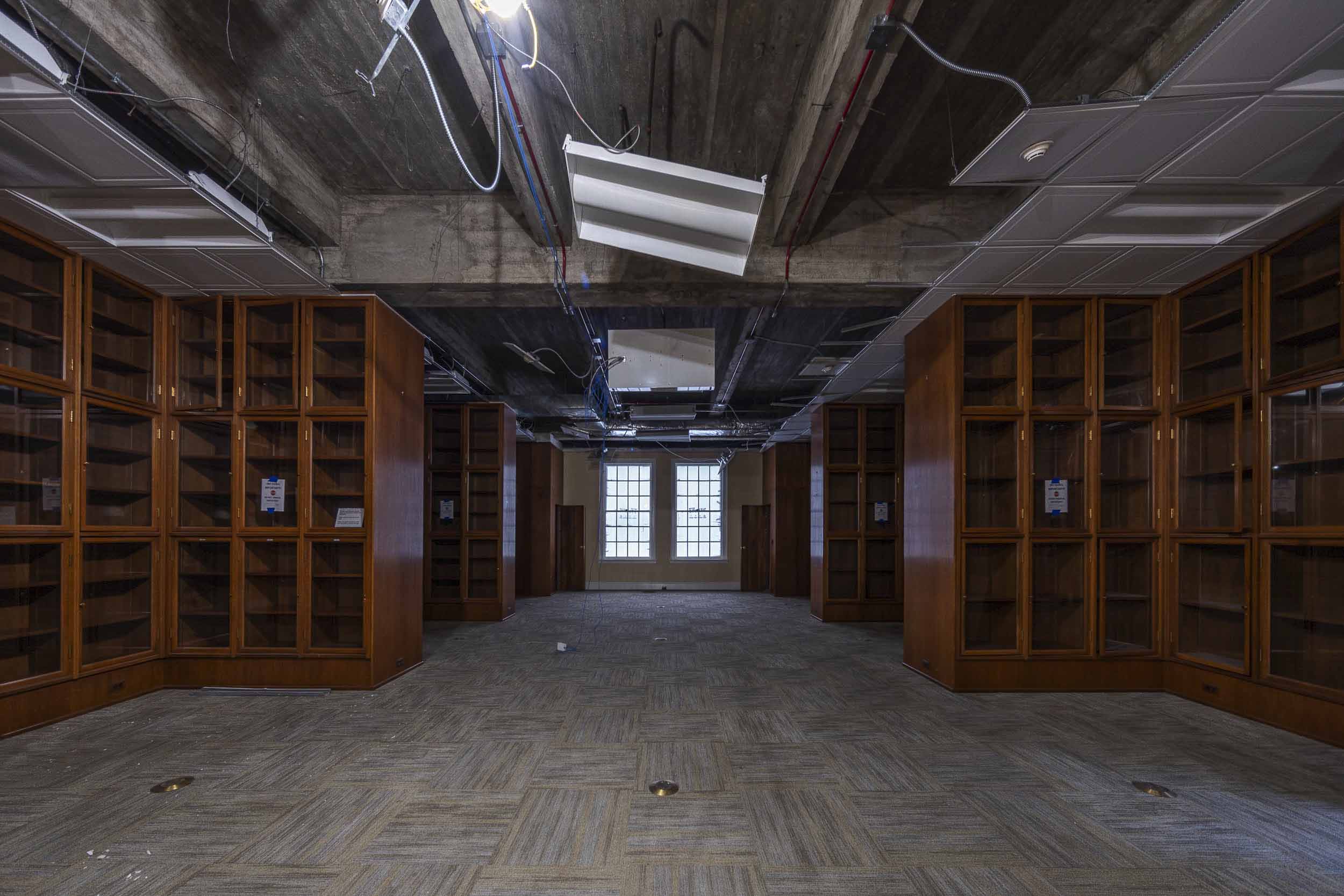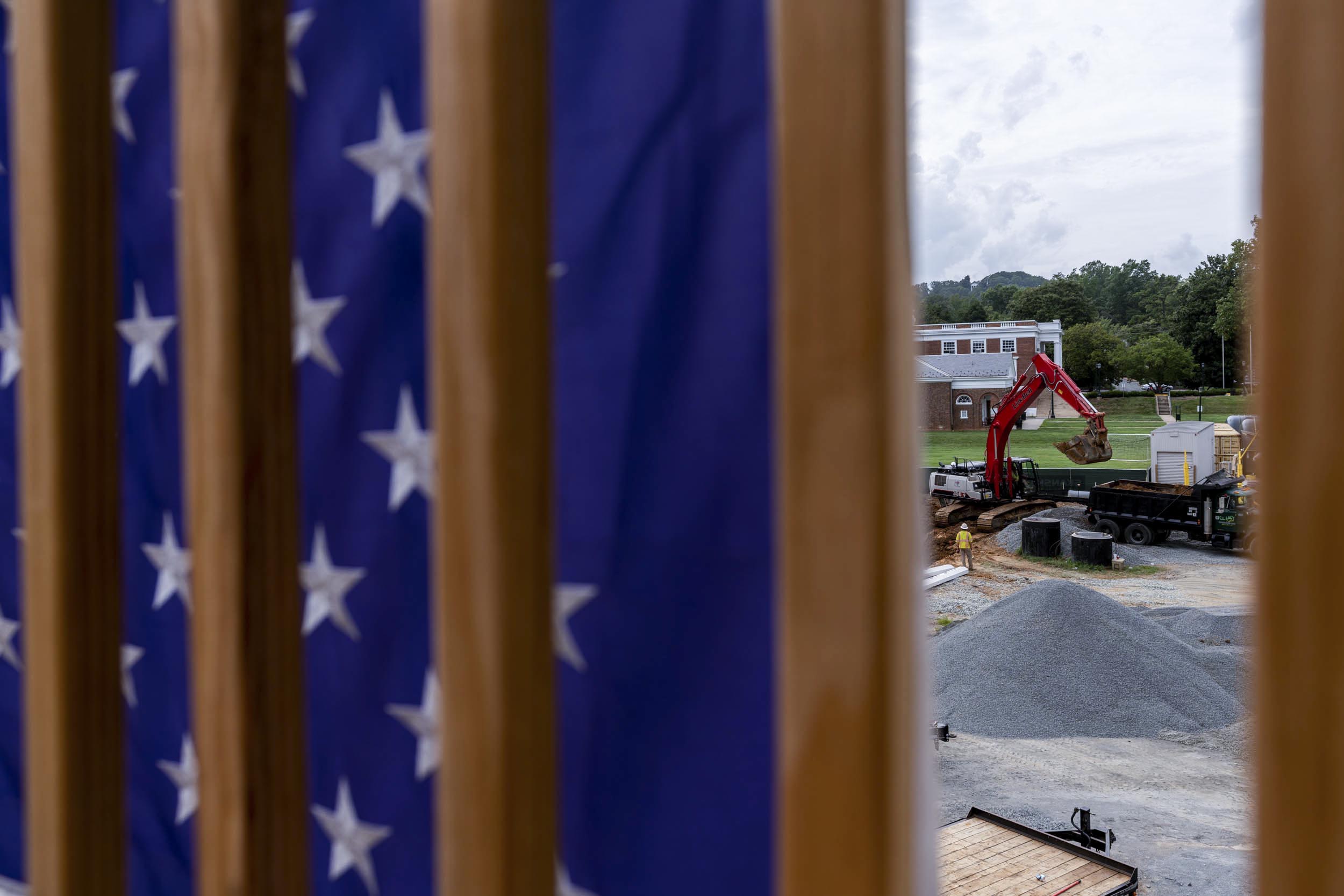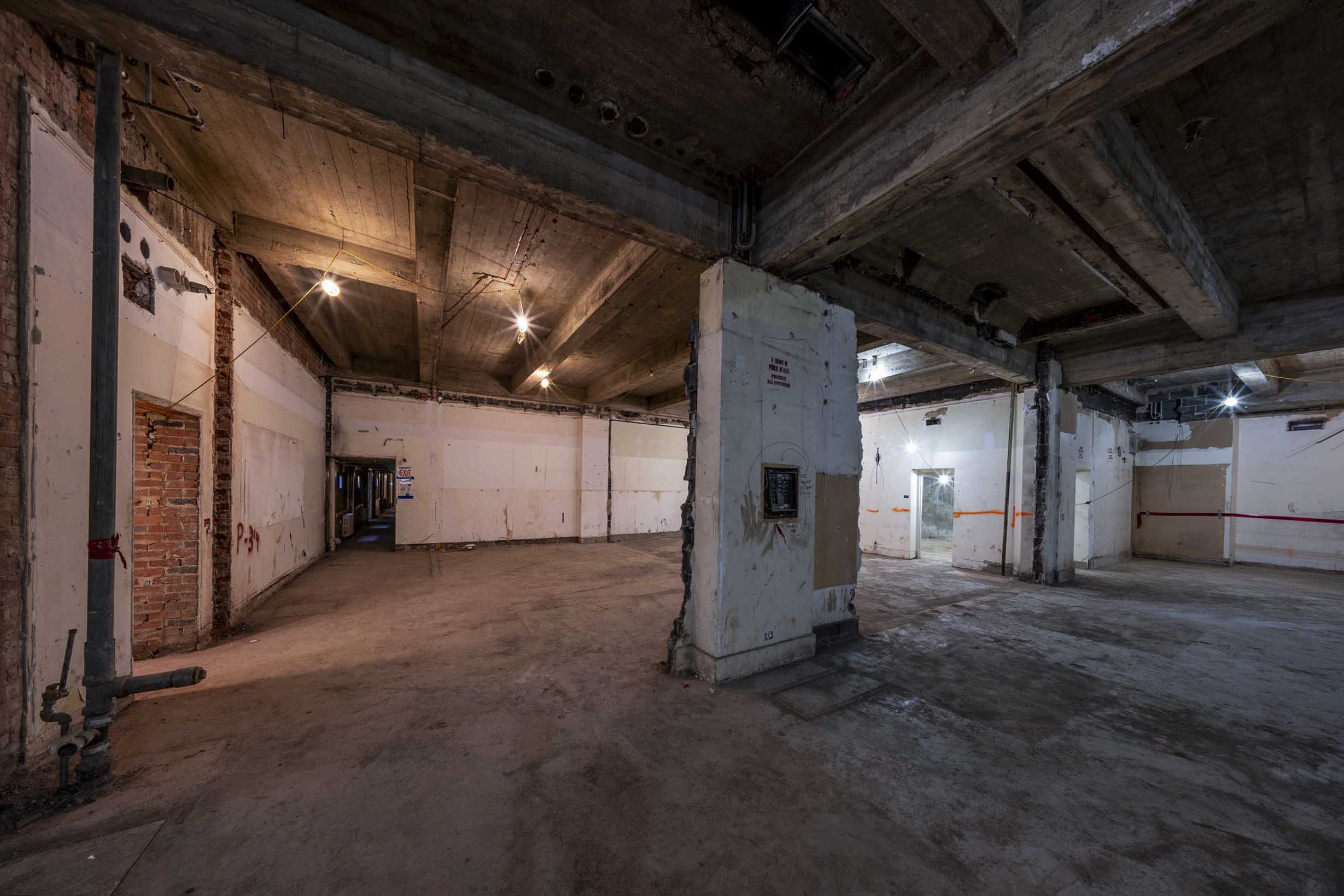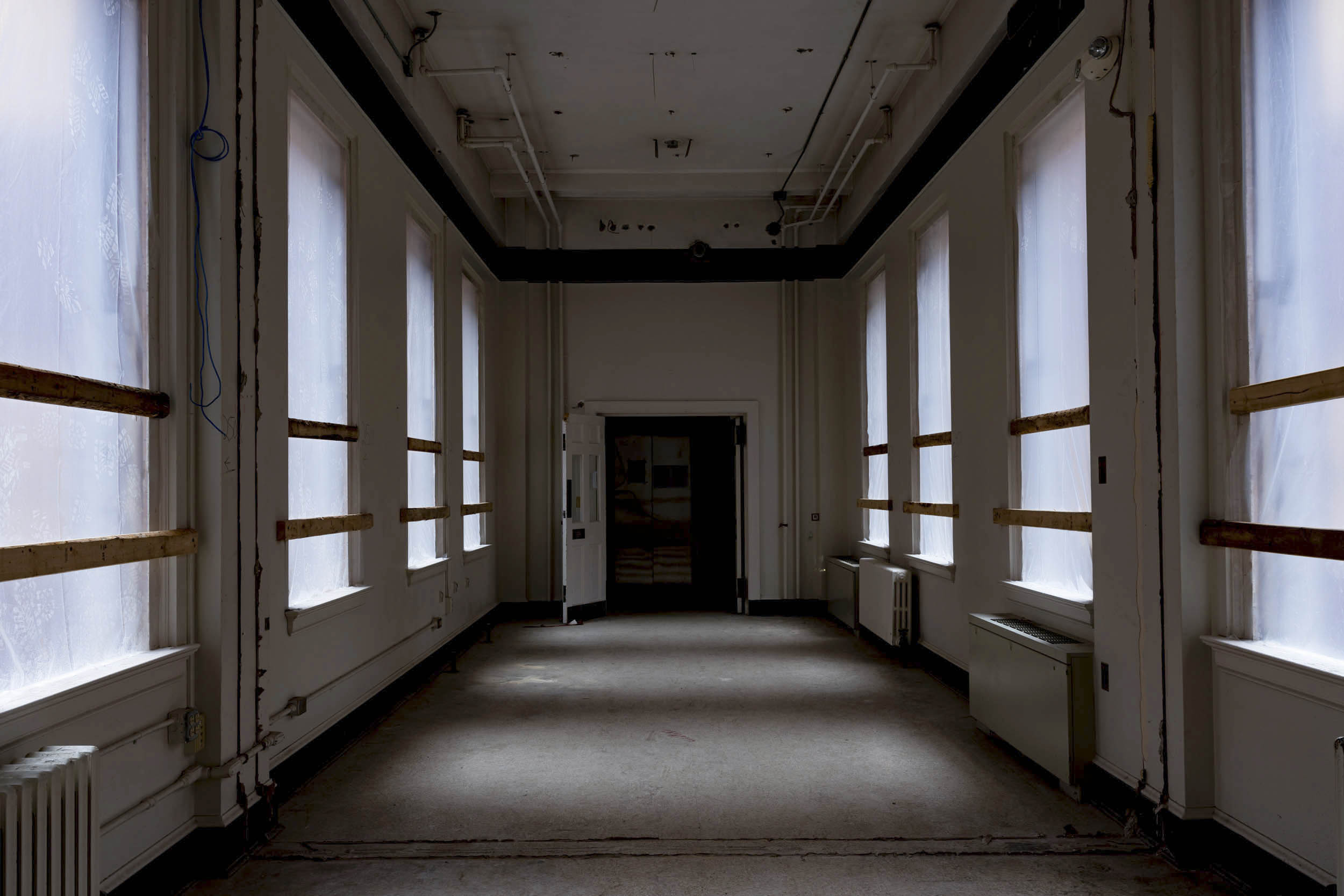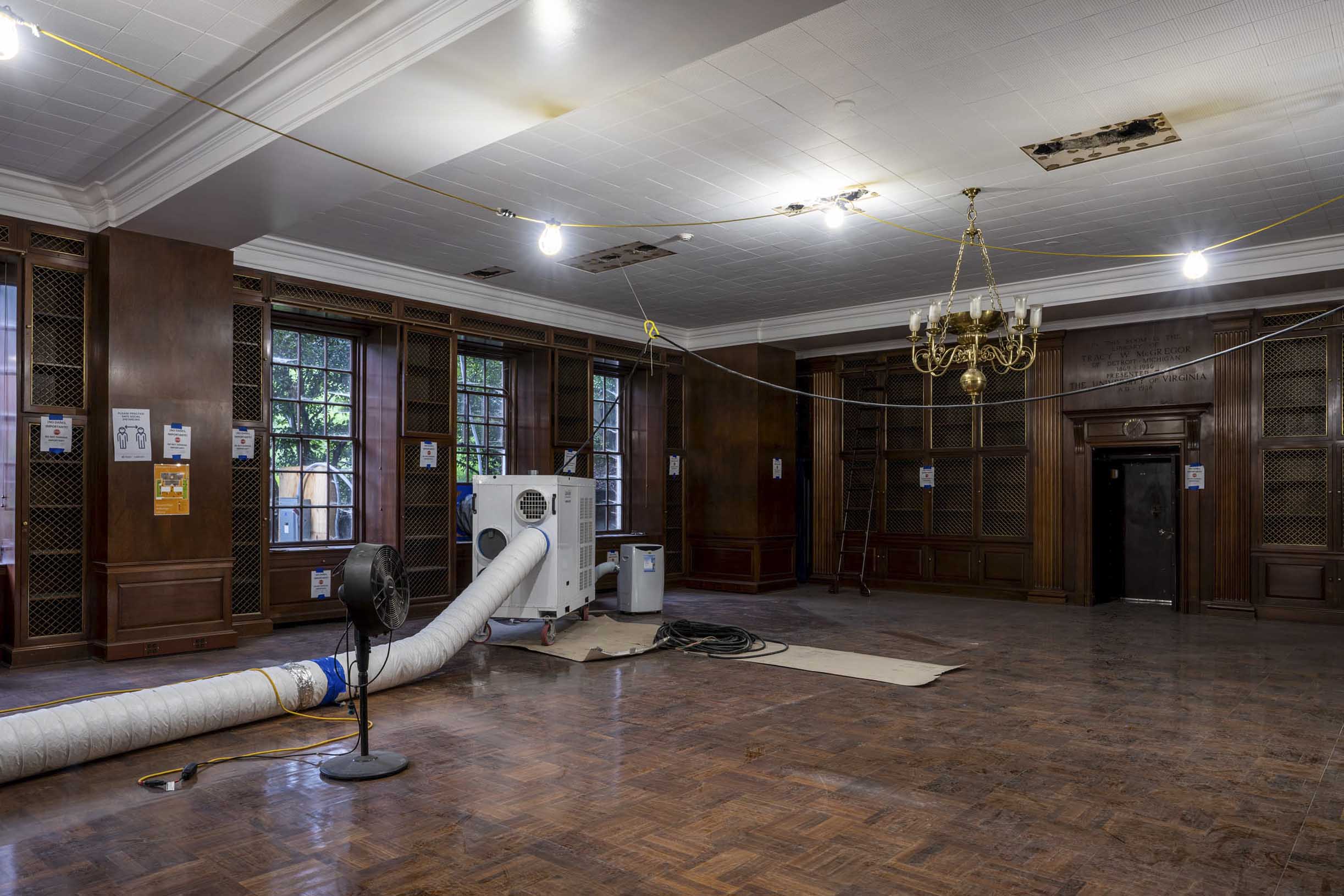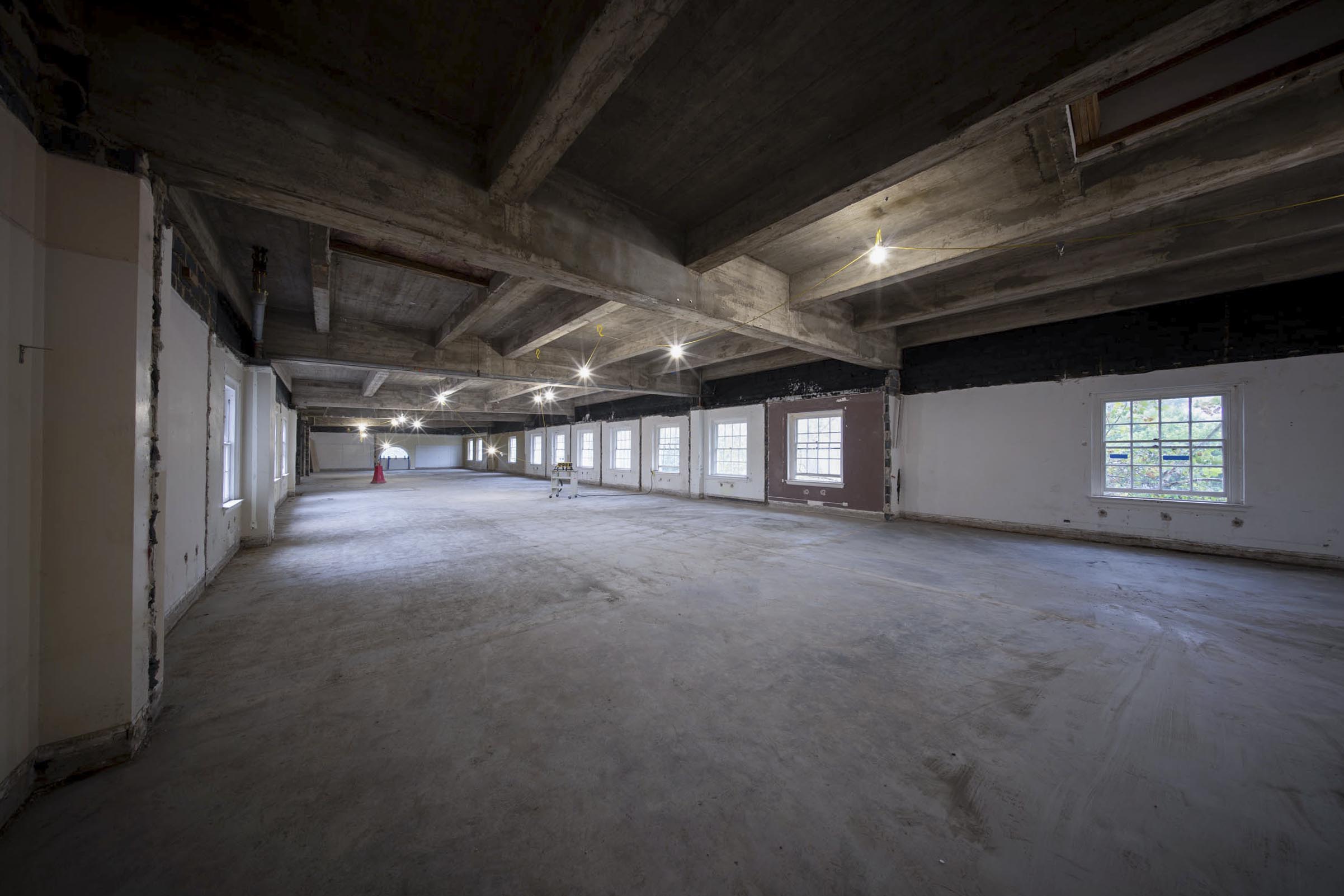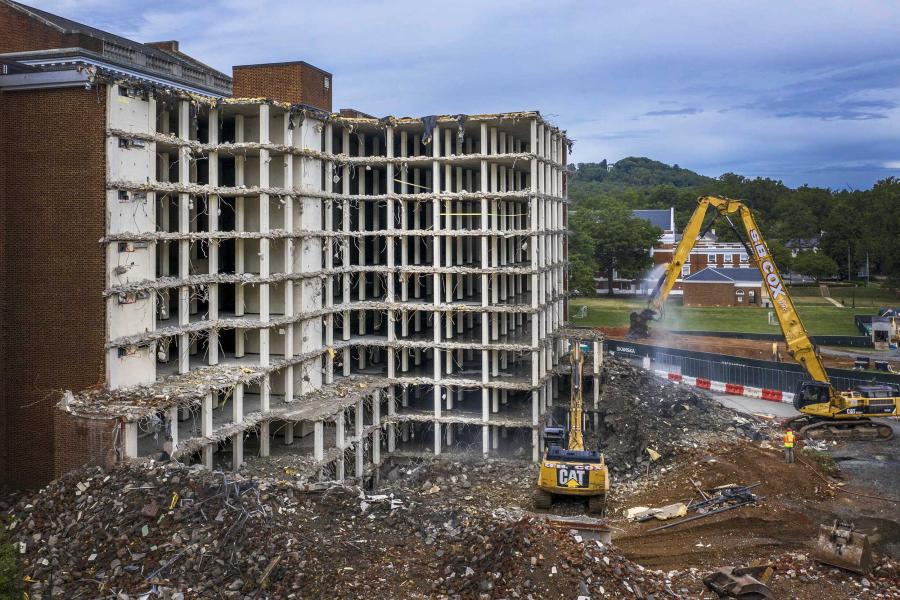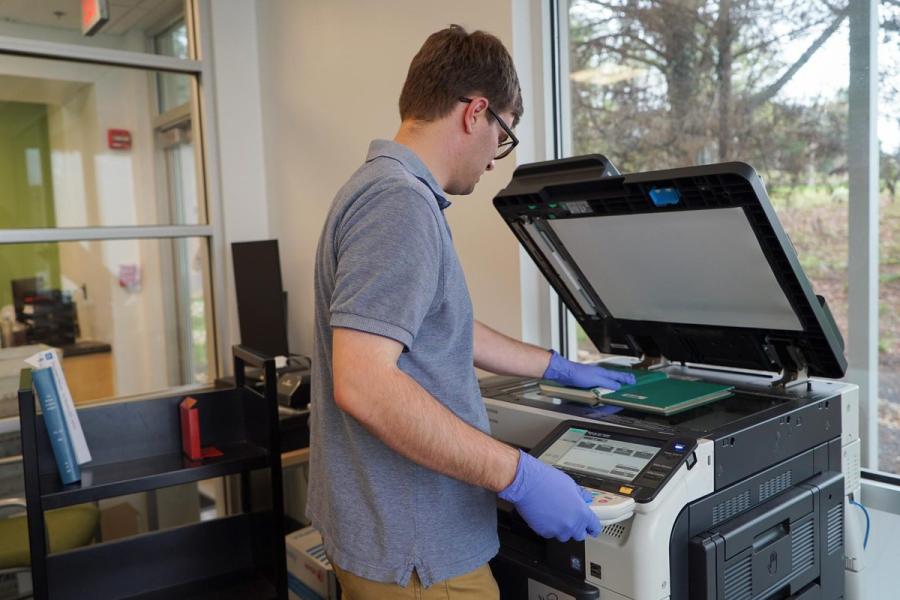The University of Virginia’s massive Alderman Library, built during the Depression era to house the University’s collections when they outgrew the Rotunda, is undergoing an extensive renovation, based on the Unversity’s own green building standards.
The renovations are preserving much of the building and recycling much of what can’t be preserved. The renovations to the library, built in the late 1930s, will upgrade the building’s systems – mechanical, electrical, plumbing and fire suppression – as well as improve accessibility, make the building more open and inclusive, and add a more open north entrance.
Many of the library’s features are being restored and reused within the structure, including light fixtures, fireplaces, paneling, doors and iron gates and windows.
“The historic windows will be refinished in place, scraped down, repaired and repainted along with new caulk and weather stripping,” said Brenda Loewen, a senior project manager for the library. “They will be fixed in place. All of these items will provide an improved thermal performance, reduce infiltration and provide LEED points while maintaining the historic appearance.”
